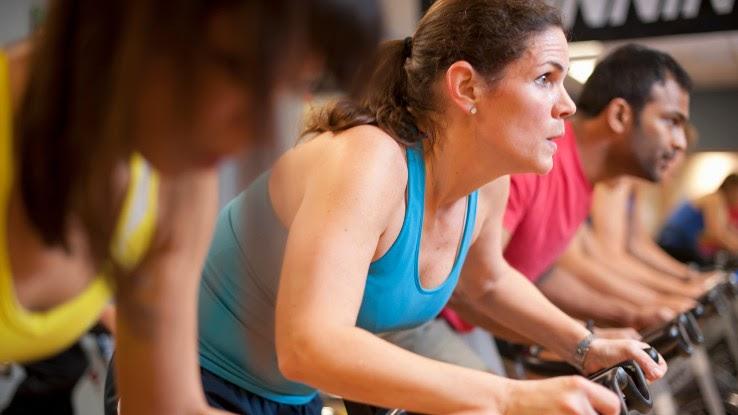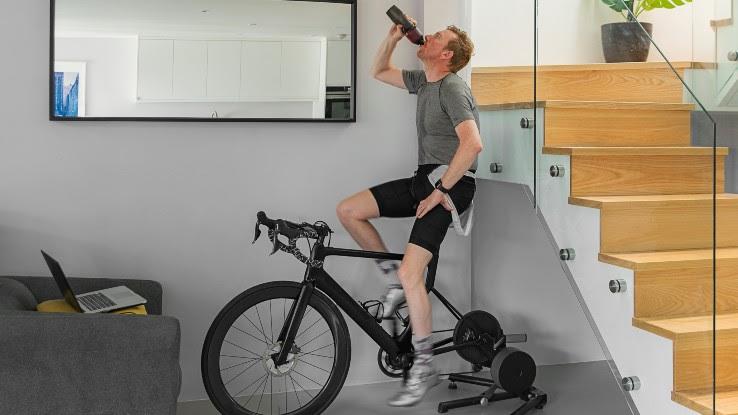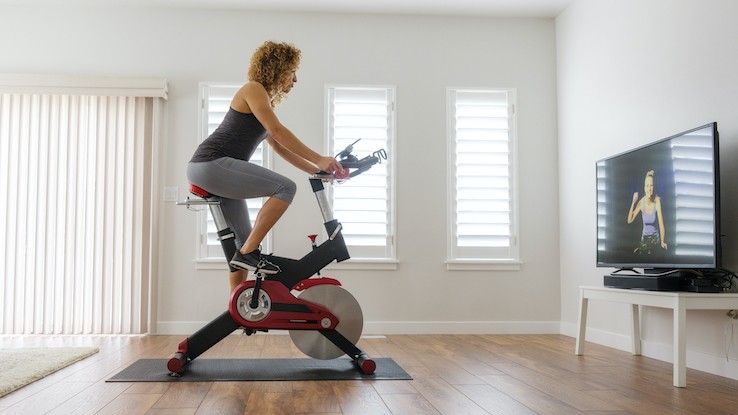
Spinning — a fun name for indoor cycling workouts that people do both at home and at local gyms — has become an increasingly popular form of exercise over the last few years. You can enjoy these routines rain or shine, and they offer a great way to get in an effective workout whenever and however it’s most convenient for you. These exercise classes can be great for your body, your mind and your spirit, and they’re particularly appealing if you’re in the mood for upbeat, engaging movement.
Whether you’re taking an online class or heading to a nearby spin studio, it helps to get prepared. Before you climb on that spin bike for the first time — or the first time in a while — brush up on your form and expectations so you can benefit from a safer, happier ride.
Tips to Improve Your Overall Spin Experience

No matter where you’re cycling — from your home to the local gym to a spin-focused studio — your workout can benefit when you incorporate these tips into your routine.
Adjust Your Seat Height
Any dedicated cyclist will tell you that seat height matters. Why? Because the height of your seat helps you maintain proper form while cycling, giving your legs the right length per stroke of the pedal. Before you begin class, sit on the bike and place your feet on the pedals. When one of your feet is on the downstroke, your knee should be nearly straight. If you have to stretch at all or your knee is bent, get off and adjust the seat height down or up.
Pedal Properly
A proper pedaling technique involves both pushing and pulling — and you’ll want to pedal properly to prevent injury. When you’re in that push-down phase of your pedaling motion, you should be able to feel the muscles working harder in your extended leg. Focus on that feeling. Notice the engagement. Your movements should be smooth. If they’re not, push in more intentionally to smooth things out.
During the pulling stage, you should feel stretching in your hamstrings, hips and calves. Think of scraping something off the bottom of your shoe. Lift your knees upward and push your feet back to achieve the right kind of motion and pressure.
Hydrate Throughout Your Workout
Even if you’re just doing a quick class, it’s important to keep the water flowing throughout your entire workout. Take the water breaks provided in class. If you’re feeling thirsty at all, take more swigs when you need to. If you’re thirsty, your body’s telling you that you need water.
Use Proper Form
While cycling, proper form is essential in helping you avoid injury. Make sure you’re doing the following while cycling:
- Engaging your core
- Not letting your knees flare out
- Using your inner thigh muscles actively while pedaling
- Pulling your shoulders back and down — away from your ears
Wear Something Comfortable
For spin class or any other cycling, it’s important to wear the right gear. You don’t need a fancy jersey and shorts — though bike shorts do add some padding — but you should wear comfortable undergarments, a breathable top and longer athletic shorts or tights.
Ideally, you’ll have shoes that clip into the pedals on your cycle. These help you spin more efficiently and assist you in maintaining your balance and position. If you’re not ready to invest in them yet, though, you can wear other solid-soled athletic shoes (not “barefoot” shoes, flip-flops or backless shoes).
Engage in Proper Breathing
While you’re spinning, you should aim to breathe rhythmically. Pedaling already has a natural rhythm; synchronizing your breaths with each stroke in the cadence is an effective way to get your own breathing rhythm going. For example, consider breathing in on five strokes and then exhaling over the next five.
Stretch Before and After Class
This tip is important for your workout and your recovery. Your instructor may guide you through some pre- and post-workout stretching. But if they don’t, try these tips.
Before you hop on that spin bike, engage in some dynamic stretches. Dynamic stretching involves stretches that move your muscles, not just lengthening them. Some examples of this type of stretch include arm or leg swings, windmills and air squats.
Don’t ignore your arms, back, shoulders and neck, either. These areas can all become tight during exercise. You might accidentally injure them if you forget to stretch.
And, of course, don’t forget to stretch those muscles in some gentle cool-down movements afterward. A full-body stretch is a good place to start, but doing some shoulder, quad, hamstring and calf stretches is important as well. These videos can show you how to do both types easily:
Safety Tips for At-Home Spin Classes

Aside from your location, at-home spin workouts differ from gym workouts in a few key ways. When you work out at home, here’s how to handle those differences well.
Give Yourself Time to Set Up Properly
Technically, this is helpful both at home and at the spin gym, but it’s especially important at home. If you’re clocking in at home, be sure to give yourself extra time to set up, clip in and breathe for a few moments before class starts. The last thing you need is to feel rushed. Being fully present for your workout can help you get the most out of it.
Know How and When to Change Your Resistance Levels Ahead of Time
While you’re spinning, your instructor will likely provide suggestions about when you might want to change your bike’s resistance level. The point of your program, after all, is to get the most efficient and effective workout in. So, when they say “take it a five,” it helps to know how to do that quickly. Practice a few times before class starts just to make sure you feel comfortable and familiar with the adjustments.
If an Instructor Doesn’t Feel Like a Good Fit, Move On
If the instructor for your virtual class feels like a bad fit for your current level, that’s okay. Switching to a different one may be the right move, and there are tons of options out there. Have fun experimenting with virtual instructors and classes to find those that resonate with you most.
Experience and Safety Tips for In-Person Classes

In-person classes have a different feeling to them than those you do at home. You might feel a little more pressure or rigidity because “someone’s watching.” But remember that nobody is there to judge you — they’re working on their own goals, and the instructor is there to help you. Here are some tips to help make sure you stay safe in person.
If You Need a Break, Take It
Whether you’re a beginner or not, sometimes, you just need a break during a spin class. If that’s the case, take it. Your health is the main priority, so pushing yourself beyond what your body can handle at the moment isn’t helpful. If that means you stop pedaling for a few, sit down instead of stand or go at a slower pace, all of that’s okay. Listen to your body, and check in periodically throughout a class to make sure you’re not ignoring signs that it’s time to slow down a bit.
Take Class Mantras With a Grain of Salt
Your instructor has been doing this a while and has a certain way of doing things, including certain mantras they’ll likely call out for the class. Sometimes, those mantras aren’t a great fit for where you’re at, in terms of both your fitness level and what your body needs for the day. If your instructor is pushing you to do something that’s harder than what you’re really ready for, don’t worry. Modify your moves as necessary. You should always feel connected to your body and to the ride, even if it means you’re doing something a little differently from the rest of the class.
When you climb on your bike, remember the most important things are maintaining proper form and listening to your own body. Keeping up with everyone else in the class isn’t important, but staying motivated is. Instead of pushing too hard, go for what you’re capable of in the moment and build up to that more intense workout later on.
Resource Links:
https://dailyburn.com/life/fitness/spin-bike-spinning-form-soulcycle/





